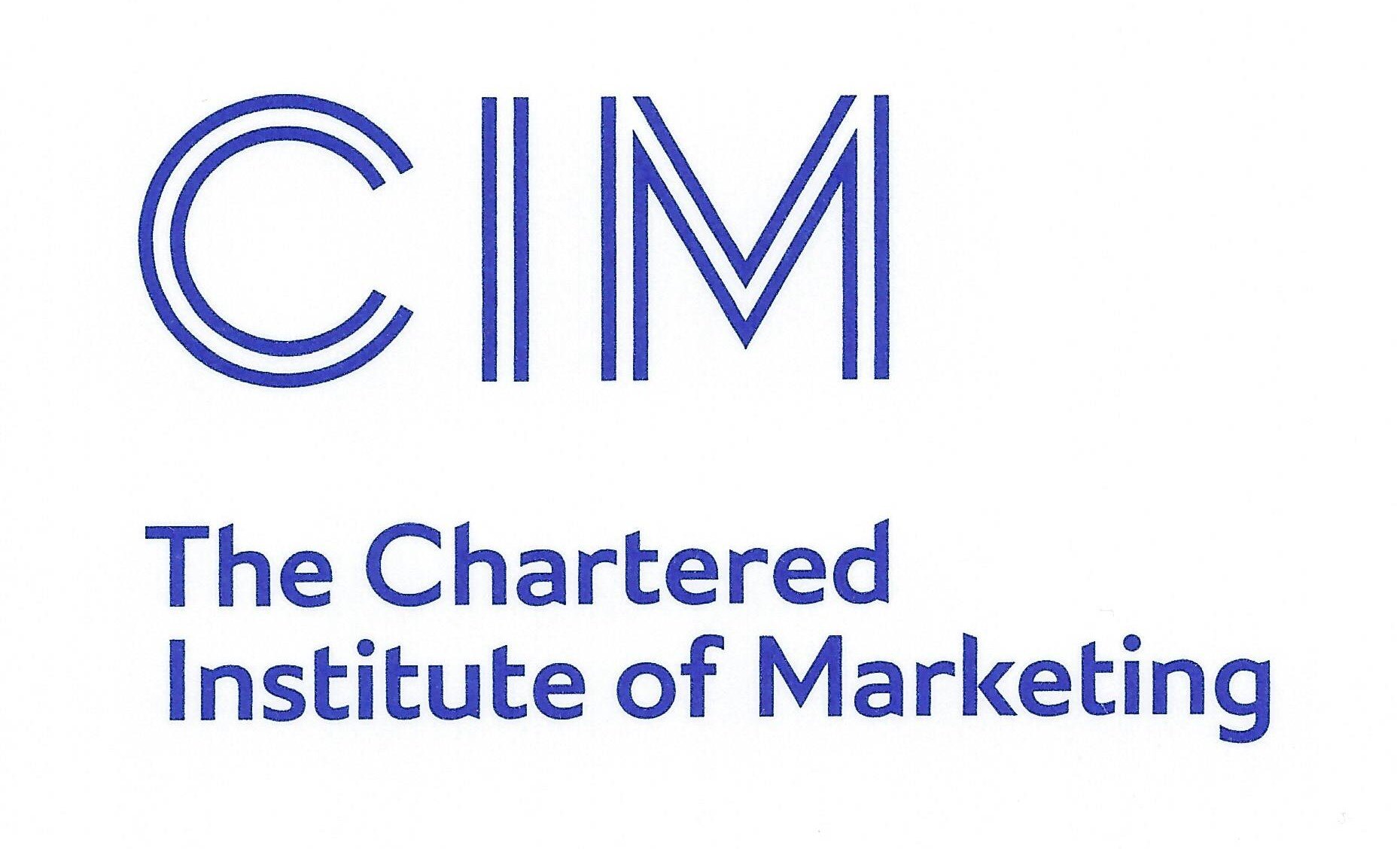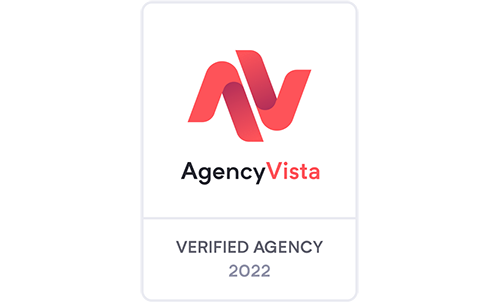HELLO EVERYONE! WELCOME TO another episode of THE MARKETING INNOVATION PODCAST SHOW!
Are you a Marketing leader working in the B2B SaaS / Tech space, and are keen to ramp up you Inbound Marketing / Acquisition performance? On today's episode, Alan Gleeson joins us on the show as one of the most recognised B2B SaaS Marketing Strategy Consultants in the UK, diving deep into the subject.
Andrei and Alan will be discussing the importance of having a spot-on strategic direction to Digital Marketing in the SaaS space, Aligning Marketing & Sales, Marketing Tracking & setting the right KPI's - as well as tech stack favourites.
Alan is one of the most recognised B2B SaaS Marketing Consultants / CMO's in the UK, Founder of the Digital Marketing Consulting firm "Work With Agility".
Alan started his career in financial services, joining Barclays on their graduate programme. On completion he spent some time at Freeserve, then one of the poster boys for the ‘dot com’ boom. He joined Palo Alto Software, a leading Software as a Service (SaaS) company in 2004 where he acted as the Managing Director for the European subsidiary for a number of years.
In the recent years, Alan has worked for a number of leading SaaS startups, in a mix of full time and consultancy engagements, supporting their scale-up and / or helping them build strong Marketing departments in preparation for funding or acquisition. Some of the companies he has been working with include Endimo.com; Akroo; Xpenditure.com; Cognism or Kleevar.
Alan is based in London, is a patron member of the Irish International Business Network, and coaches at Ealing Trailfinders Rugby Club in his spare time. He has an MBA from University of Oxford, and an MSc from University College Cork, Ireland.
If you want to listen to this episode instead of reading about it, choose your favorite platform:
You can also watch the episode on YouTube:
LET’S DIVE INTO THIS EPISODE!
Andrei: On today's episode, we have a very special guest, an old friend. His name is Alan Gleeson and he's one of the most recognized B2B SaaS Marketing consultants and specialists in UK. Alan has some very, very interesting and insightful success stories that we'll discuss in this episode today. Alan has been involved with growing from a marketing perspective multiple startups in the UK, but not only. So he his expertise's international and global, he's been contributing to the successful sale of multiple SaaS and software businesses. Alan, tell us about some of the recent success stories because you just mentioned them and I was really surprised.
Alan: I'm working at the moment with a company Endimo.com in Ireland to a very strong, fast growing startup. You and I bought work together with cognisant, which is probably the fastest growing SaaS startup in the UK. So again, we can share some stories on that leisure. And I've recently been involved with a company called Kleevar, another company in Ireland. And I also help American companies looking to break into Europe. And similarly, some European companies looking to expand into the US. So a lot of my clients are serve around this series, a sweet spot. Some of them are kind of pre series A, some are post series A but they're all very interesting in their own way. And I'm very fortunate to be working with such great people.
Andrei: Very cool. Today we'll have a more strategic episode. So, we'll look at marketing strategy for this specific niche. And we'll look at what you need to do if you are a startup in this space and you want to grow in the current market. So obviously, we had some things that were shifting or changing during this COVID time. Some businesses or some investors tend to be more careful with how they invest their budgets. And then we need to look as a business, at how to build that brand power and to build an inbound marketing channel, to drive leads and conversions. Alan is a specialist in this, and he has a lot of success stories to back that up, and I really think we're gonna have a very insightful episode for everybody that is activating in this niche or is looking to get into this niche at this point in time.
Alan: I think the best way to start this discussion is to ask yourself: are you pre product market fit? Or are you post product market fit? So that is a really crucial distinction. And essentially, what often happens is everybody wants to be product market fit, because they want to go and they want to tell prospective investors, they want to really accelerate the growth. But often what happens is that they're not really yet product market fit. And then the big problem is that, if you decide that actually, you are a product market fit, and you're not, you start looking at things like growth hacking and lead generation and inbound and putting cash into the kind of pipeline when you're not there. So you're essentially wasting a lot of that money. There is an article where it is mentioned a lot about the biggest Miss hire in SAS startups: they hire a kind of a marketeer focused on growth, when they should be hiring someone focused on product market. And trying to scale prematurely, means you're burning cash, when actually, the pre product market fit piece is more about research, it's talking to customers, talking to prospects. And it's almost like an academic exercise. So again, I thought that's worth sharing at the start, because that distinction is really, really crucial.
Andrei: Understood. So basically, what you mean by this, is that if you haven't really generated a lot of sales yet and you don't have that product market fit, essentially is investing a lot more time and resources into validating your product pricing, brand strategy and so on, before.
Alan: Exactly! There's no point coming in and hiring someone. I see job posts with companies that are very young, looking for growth hackers, growth marketeers, head of demand generation. And actualy, they're not product market fit. And I think if you've got an initial cohort of customers who have to take out your friends, anybody that you've signed up for free because, they're a friend, don't count those. If your clients are in lots of different countries, and lots of different industries, you might have gotten lucky with a few. Ideally, you've got one small vertical where you've got a concentration of 20 or 30 that you're really meeting a need for and you can understand their pain, you can understand their challenges. And then you can really take the learning to make sure that your pricing is good, your positioning is good, your feature set is good.
Of course, you want to hire someone that's investing in growth and generating leads, but if you skip the kind of really crucial customer engagement market research product market piece, you are then going to spend a lot of cash figuring out and trying to understand why you're not converting.
Product market fit is kind of an ill defined concept. If you don't have a lot of people that are using your product and sticking around, you're spending 3/4/5k a month on acquisition, and you're getting decent inbounds that are really good quality, could be 20, it could be 50 or 100. You probably don't have product market fit. If you're also spending 3/5K and you're only getting 2/3/5 coming in and they're different industries and different sectors, there's a lack of a pattern. So I'm laboring the point a little bit longer. But I think it's a crucial distinction because again, for B2B SaaS startups, you will really suffer if you rush to spending money on people for Legion and putting money into kind of different channels. I'd love your thoughts on this: do you agree, disagree?
Andrei: Yeah, I think it's very true. And just for our listeners to be very clear, so if you guys have a startup, my understanding is: look at your current spending and look at the leads and try to audit the kind of leads that you get from which sectors etc. And if the acquisition, for example, a specific niche which your product can deliver towards, seems to be not so strong, or your leads seem to be fairly random in the way that they come through, then this probably means you have to go back a bit at your branding and add the values and your product itself and look at how to better tailor your offering towards the market that you're most interested in. Before scaling your budgets.
Alan: That's exactly then you've got to go narrow, you've got to go into a niche. A guy was with a client recently and they said: "Oh, isn't it wonderful we've got some clients and fast moving consumer goods and some financial services and some insurance?". I try to explore in a bit more detail, than two or three in each pocket and two or three in telecoms. And there's a phrase that says that marketers are brutal. They are because if you are in marketing, which one of these you focus your attention on? You can't have the same messaging. They'll be different requirements for the different niches. So you need to be really narrow, it's counterintuitive. You got to be as narrow and focus and really fix the pain that a small concentration of vertical has, because if you do that, you essentially get product market fit within that category and you can expand from there. But you can then quickly realize new personas, what are the ideal customer profiles look like, a publication should be focused on? What are the keywords? Otherwise, it's back to this kind of crucial piece- If you think you're a product market fit, prematurely, and you get it wrong, you're going to burn a lot of cash because of course, with SAS, the sales and marketing costs are largely up front, and you're hoping to obviously generate income into the future. But that whole model is very fraught with risk. If you don't get this product market fit piece right, you will end up again, as I mentioned, putting cash in prematurely burning through it and it frankly, makes it very difficult for someone in marketing because: how can they be expected to know all these different verticals? Who are the main thought leaders in these verticals? Who are the main publications, what are the industry bodies, do they read LinkedIn? If they're not reading LinkedIn, what are the keywords? So again, that's kind of the key message. Andrei has been really fixated at this front piece and why am I laboring the point here? Because it gets back to strategy. And strategy in a B2B SaaS startup is challenging, because your resource constraints, again, I'm assuming you're in Europe and have fairly modest resources. So therefore you've got to kind of get the strategy piece. You may have a junior marketing person that's just not capable of setting the strategy. The strategy might need to come from the CEO, but ideally, it's driven by data from the existing sales. It's not conjecture. It's not wishful thinking. It's a ruthless interrogation of what we want so far. Okay, which of these little pockets looks like they're the most attractive in terms of market size and opportunity? I'm going to talk a little bit more to these few verticals, and learn what I can and then really target those to them.
Andrei: And from your work, because I was also thinking about some of our recent collaborations, how is that discussion carried when, maybe you have a very passionate founder and have a core team and they think they got it right. Maybe they are pitching for investment, as well and they think they have the strategy all set up and all they need to do is acquire new clients. How do you carry that discussion or how do you approach the situation where there is a need for a reframing of the strategic approach but maybe they are not willing to look at that anymore, or they are not willing to invest resources anymore in strategy, because they might think that they have that product market fit already there from a couple of gyrations?
Alan: Making some assumptions- there's a huge difference between US, Western Europe and Eastern Europe. States is typically five or 10 X the race. They've also got a 300 million body domestic market in the US. A lot of the stuff we read has got a very US kind of tinge to it, right? And the point is, they're coming from resource abundance, whereas Western Europe and further kind of East is even what I call resource scarcity. And the other thing is VCs are often more comfortable being concentrated around areas where they're geographically pretty close to their portfolio. So you've seen out in California, you've seen London and Berlin and Ireland, to a lesser extent, whereby the VC's has enough deal flow and pipeline in their local areas to say: We're kind of happy with the talent pool and the lead flow in our area, so the further away from that you go, the harder the transaction costs, the more uncertainty. But it's back to a kind of a key piece here: is that number going to trump everything? And by that, I mean if you've got a good grasp of your unit economics, and your unit economics means that you've got real clarity as to who your customers are, demonstrate that you could acquire the meaningful numbers, you understand your cost of acquisition, your understand the lifetime value, understand the monthly and annual recurring revenue. If you've got compelling data, that makes people sit up and stand up and take notice, it cuts through the noise, so it's kind of chicken and egg, so ideally where you probably want to get to, is get to post product market fit bootstrapped. If you can, get to the point where you're dealing with decent numbers and then you become someone that cannot be ignored. I don't know if that answered your question.
Andrei: No, it does. And from here because, let's say we have the product market fit. And we went through all this journey of rediscovering our brand, maybe in looking again at our customer profile, we have the niche, we have everything. Now, there's a lot of tech on there. And we know that for B2B lead generation is very essential. And then there's tools and channels that can help this process of generating leads. Let's start with the channels. What are the channels that you think a start up in this space should look at attacking as a must in the beginning? So obviously, it depends on the resources that they have, but what are some challenges that you didn't leave out in the beginning?
Alan: I think the key piece here, which is what you mentioned, is resources, right? If you have a junior marketing person that's pretty young, pretty inexperienced, there's no point trying to layer on huge amounts of extra resources and tools and platforms, because it's not going to work. You can't be really gearing up the expectation of lead generation if there isn't a large enough body of people are the skilling hoax. No, of course you can support that in supplement with people like yourself, right where you're getting access to external and resource and I think that's something that's very, very useful in the early days. If you really understand your ideal customer profile, or your persona, which is essentially, who has got the pain that you can fix? If you know the title of the individual, if you know the industry sectors that you're in, if you know the pain well enough that you can write compelling "How to guides to fix your pain" and you can then start targeting them very effectively using outbound, way more effectively than in the past. Again, outbound will give you mixed results. Because, if you don't really know your ideal customer profile, if you don't have a strong value proposition, if you don't have a great landing page, you can come on stop pretty quickly and it's not the right one for us, it didn't work.
Well, it's a very powerful tool, if you know your ideal customer profile, if you've got a compelling value proposition, if you've got a strong landing page, if you've got good English writing in there, that's kind of outbound.
Google Ads is obviously another one. But again, back to my earlier point, you can really burn budget very quickly if you're trying to advertise to everyone in every country. Unfortunately, Google is essentially a monopoly player in many markets, right? So cost of acquisition can be very, very high. But, it is a tool where you've got search intent. So people are searching for keywords, and you may have a solution for those keywords. So, it is something you've got to use, but it comes with a big health warning, because you can burn money pretty quickly and it's very, very complicated. Again, you might need 12 sources. Why? Because platform is a bit of a beast and if you've got only a couple of people in your team, and they're trying to do 100 things, they can never give the attention that it deserves. So things like attribution and tracking and optimizing keywords, so that's the second one. And the third one is probably LinkedIn. Again, I'm assuming b2b SaaS, but you need to try and generate some awareness that you exist. So again, the beauty of LinkedIn is that you can get access to your ideal customer profiles and you can kind of promote your brand to them, probably through sponsored content or download white papers. Look, it's not the same as Google ads, but it is probably assisting it by helping you raise awareness. The problem that is essentially a monopoly product as well, and unfortunately, the cost is just prohibitive from any and it's extreme, because those tools, Google ads and LinkedIn, are often where many started the budget's goal and it's just frustrating that they are both lacking major competition so they can essentially name their own price which pushes up your cost of acquisition.
Andrei: Yep, very insightful. And going back to the pricing issue, because again, as you mentioned, America and the Western Europe market as well, they're both fairly expensive when it comes to any sort of Google and LinkedIn equally. Do you find any good examples? Or were you part of projects that had an innovative approach to building their inbound channel strategy? Maybe they did something out of ordinary, or they had some growth hacking tactic that that generated them a lot of qualified leads?
Alan: It's a great question. You're putting me on the spot here, right? I think growth hacking is an interesting concept. It suggests that there's almost silver bullets, right? And of course, what often happens with growth hacking approaches is they quickly get found out and everyone copies and then the advantage is gone. It's very hard. And again, there's a big kind of caveat with a lots of my advice is that B2B SaaS is so individual to your company, because there's so many variables between Europe versus US where your market is located, things like how much budget you have, what's the team size, how competitive the target market you're going after is, whether you're kind of creating a category or whether a category exists. So it's very, very hard to kind of share stories. I guess, you do see some interesting ideas, right? So outreaching to people looking for them for quotes so that they can be in a publication. That's a good idea. Webinars like this, where you're trying to invite people to share expertise, which is creating valuable content, which then can be used to market effectively. I'm going to push it to you in a second so get ready, right, because this is more your chart. I think, if you go to tools like Ubersuggest, you can find the keywords that your competitors are using to bring traffic to their site. What you will find in many instances, the most of them are using their brand to bring traffic, that's where the bulk of their traffic will come from. And of course, you can put Google ads against why we're better than x. I don't have any standout examples. I think I've seen quite a few over the years, which have all been eroded quite quickly. Have you seen anything of late that you think is a really good one to explore?
Andrei: This basically confirms very much of my hypotheses when it comes to b2b SaaS, because I think, in software is much harder to come up with growth hacking ideas than it is for consumer goods, or for things that can go viral. I know that one thing that I noticed on LinkedIn was the guys at Turtl.co. When they launched and I know that we were discussing about them at that point, assessing whether they were a viable solution for one of the projects what we were working on. They did something at an exposition where they generated some fun content. I think that their team was out outside, generating some engagement offline. And then they transpose that those movies and sort of engagement online, as well. So that thing managed to get a lot of attention to them on LinkedIn. I'm not very sure, but I assume that that translated a lot into sales conversations as well.
Alan: And the key point is you can generate lots of noise, but if it's not your kind of persona target personas, and that's the key piece, making that distinction. I have a client that recently was starting off from webinars and they kind of had a celebrity on one their first webinars and of course, the number of signups was through the roof. But it was very poor conversion subsequently, which I anticipated, which I explained to them and said: " Look, it's great for brand awareness. But the reality here is, this person is attracting a completely different audience to the audience that we really need." So back to kind of really understanding the pain of your target audience, how big a pain is it? What are people currently doing? Are they using spreadsheets or documents to manage whatever you're trying to fix? And then, really trying to help these people, offering them value and if you view it as trying to educate and help broaden sell, you'll be in a much better position. What you want to do, is try and make the person that you're targeting, promoted. So if you can make them look better, if you can improve their ability to do their job, if you can make them save money, or if you can drive revenue for them, or if you can lower their costs, and so be really aligned with understanding. And this is back to the real start of the conversation where we talked about product market fit and understanding these different personas, and their pain and their challenges, then you can really craft content and solutions. And again, to your point, I don't really grow that too easily in b2b SaaS. The reality is, it's a fairly dry sort of predictable process whereby you're offering value in white papers and case studies you're demonstrating, you've got to mix a call to actions on your site, you're offering people choice. So when they do need to kind of make a decision, they can get a demo or a discovery call pretty quickly and really understand what will meet your needs, and you're also helping them to educate earlier on in the journey.
Andrei: You mentioned something really good as a transition to my next question. Crafting content and understanding your target persona, so that you can craft marketing content to deliver towards their objectives or sort of their desires. And I think that gets us very nicely into another subject I want to discuss with you, because I know this is very much your cup of coffee, and something that you specialize in, is aligning marketing and sales and making sure that in b2b, the two go together. So let's start with your thoughts on it. What do you think are the things that maybe our listeners can look at in the beginning to assess whether these are aligning their organizations, and then how can they start building from there?
Alan: It's a great question. I think there needs to be strong dialogue, right? Because the reality is, marketing in many instances is so busy, they're a step removed from the customer. Yeah, the step removed from the customer profile, because most marketing functions in Europe are resource constraints. Suffering from resource scarcity is- too few people trying to do too much. Again, the key skill for anybody in marketing is prioritization, because you're going to be SAS, you're dealing with so much coming at you, right. But what I see working very effectively is being really clear with sales. If you guys are talking to people on a regular basis, what language are they using? Are they using the same language to describe the solution set that we're using? Because from the keyword point of view, you want to zoom in and water the kind of most compelling keywords that describe your service so that you can own them and sort of create a category around, but are people in the front line use not same language? What are the biggest headaches, what is the language you're hearing? So there's a couple of ways you can do it. A few things that you can look at doing, is having Slack channels, whereby sales and marketing are in the same channel. That can also help shape editorial calendars. So one of my clients, we're very fleet of foot around content. It's a very changing evolving landscape, particularly with COVID. We are really shaping our editorial Calendar based on things that are picked up from sales calls. There needs to be kind of joined at the hip. The dialogue around the MQL and SQL quality. So for me, a SQL can only happen when a salesperson has spoken to someone and validated what are their needs if they have money and then have willingness or needs to kind of purchase and there needs to be a dialogue back to marketing. The sales cycle this quarter is particularly long. So there's got to be this feedback loop that helps marketing to work more more effectively. Which comes to my next challenge, which is attribution. So it's great if you're an often US companies again, sorry, all my friends in the States, but it's easy to have attribution if you've got 10 or 20 people in marketing and one or two dedicated to it and you've got the latest technologies and you're running the forensics and you're running marketing automation tools, you got plenty people to pre create lots of contents, you can feed the engine, but it's very difficult in Europe in a more resource constrained context. So attribution can be very hard whereby that bit is the bit you can often try and push sales really hard. When they close the sale is it really clear in the CRM or initial sources that he was? If it's not, there needs to be an investigation to go back and try and understand: was it Google Ads initially brought the person, was it LinkedIn? That piece of data really is the most important piece of data to help fuel further marketing efforts.
Andrei: Very, very good and broad answers, as well. I think you touched on a lot of the questions that I was going to go into. I think one thing that is different from the UK market specifically, and I think it shouldn't be understood better by the East European market, is the importance of tracking. Because it happened more times that the client was interested in generating those leads, or those sales, without actually wanting to know the channels that were performing best. They were only interested in having a system that works, so that was their way to go. Which is fair, from a business perspective-a CEO would want just the revenue growth. But I think that in UK, the approach to generating that revenue growth, which is understanding which channel specifically work best, and then what type of content so that everybody in the company aligns to the type of communication that needs to happen at any point in the sale, whether that's first contact marketing or sales or even a discussion with somebody else from CS, customer success. That's not happening too much in Central and Eastern Europe, as far as our experience. I think this is a very important point that you guys, if you fall under this segment, that maybe you are not looking very deeply at understanding what works for you in terms of channels or in terms of content distribution on specific channels. Maybe it's the right time for you to go and to talk to your marketing guy or your marketing agency and really analyzing that and seeing what you were doing before that was working well, and why? And then how maybe you can double down on those specific, maybe two channels rather than spreading your efforts on six channels at once so that you can generate scalable results.
Alan: Exactly, right. I have seen this play out so many times, so let me paint a picture. You've got a couple of people in marketing, they're working hard and CEO looks around the corner and says: "Hey, Alan would be great if you could do a webinar in two weeks time for us, right?" And I say: "Yeah, sure, boss." I tell all my clients, they got to run toggler free time tracking, because what invariably, I know as well, why are they trying to do the webinar? Is it because their friends are doing one, okay? And what will often happen is, it could take 40 hours of work, right? Because, you've got to promote it to an audience, you've got to make sure people are signing up, you've got to all that thing. And I said: "I don't think this is a good idea. Because if the goal is to drive leads back to the point, I'm not sure this is the best use of time with scarce resource." So, low and behold, what happens is the webinar gets run. And a lot of times sunk into it, I think over 40 hours between a couple of people. And it went successfully in terms of people showed up and enjoy the content. But did it generate any high quality MQ Ells? I think it generated maybe one. So when it came to next month's webinar, I'm kind of saying to the guy: "Well, hold on a second, you need to communicate back to your CEO. Fine, if we do outbound activity, it usually brings us in 10 MQ Ells for about a quarter of the price and about a quarter of the time." It's a really good representation of the kind of scenarios that plays out and if you don't have attribution, what's happened here is webinars then become a monthly occurrence that have been landed onto the top of the marketing function it's already busy. And it becomes almost a vanity project because it's not really bringing in leads, but it's now become a habit. So this is why the attribution piece is really key. And of course, I'm not going to get into multi touch attribution, and it could be different channels. Obviously, you contribute to a lead, but you really need to be stated on trying to understand when a sale is closed, can you address them nicely? Just out of curiosity, how did you hear about us and make sure that captured in a field in the CRM, not in notes anywhere. It's got to be the field that when you interrogate at the end of the month, where did all these sales come from? You can start seeing patterns, because going back to where you want to grow, a resource constrained function needs focus, so they're going to need data on which to make these decisions. So ideally, what you're going to come back and say is: "Well, why don't we reallocate those hours and not spend into this channel because that's working more effectively based on sales?".
Andrei: Very, very insightful, Alan. Thanks a lot for this. Now, going back to the tech stack, and to some tech PCs that you think are good quality nowadays, and anything that would be useful for a startup in this space. What categories of tech would you be looking at, maybe some reference things that people can go and check out outside of this episode?
Alan: Yeah, that sounds great. So Toggl is a free time tracking app, I think it's really important to track your time so you know how much of your time you're spending on different activities. So then you can kind of communicate effectively with the C suite and explain this is the time that you're taking up a tool for prioritization. So Basecamp or Trello. Take a look at any of those two, I think they're really good. You do need to prioritize because you're going to get things coming at you from all angles. And make sure you're running Google Search Console. Very important. A couple of others that I think are quite useful- I do use Grammarly to check my content, I don't download it to my computer because it slows everything down. Zapier is a great tool for kind of pushing leads, into Slack or into your CRM.
Andrei: In terms of the CRM, what are some CRMs that you liked in the project that you were involved with?
Alan: Yeah, look, it's a great question. I think a lot of CRMs have largely similar functions. Their UI and UX is key, right? So it's a case of looking at a few different ones and seeing which UI and UX thing and also the integration. So does it integrate with your site easily? Close is one that I'm using at the moment and I use Salesforce for previous companies, I think it's a bit of a beast for a lot of these. I would prefer using that to further downstream. Look, there's a lot out there. Any off the top of your head that you're using lately, Andrei?
Andrei: Well, we have clients trying to win Zoho, which understood have done a very good job recently at improving the platform. And we use HubSpot. So we are probably looking to stick to them because they have the sales and marketing in the same place. And they also have the cha,t which we can implement on the website. I know that you were a fan of Drift, right?
Alan: Yeah, and also I've used Insightly. So I've definitely used a mix at different clients so there's no standout one, I think depends on your budget, depends on your team size. Teamwork is doing some interesting work and they should be checked out as well, when they are trying to integrate a lot of these. It's a matter of choice but start with a fairly entry-level one and use up your to kind of make sure you're connected with the website and make sure you're really clear on the different lead status. You don't want to have too many and you want real clarity, when does an MQL become an SQL, there's got to be no doubt or ambiguity about some of those elements.
Andrei: Very cool. Alan, thanks a lot. So we discussed about the strategy, we discussed about how to approach that and assess whether you are in a good position to scale and double down on inbound lead generation and invest in your marketing models, or you need to review where you stand. We discussed about the channels that a business in this space can look at and how to judge them and also very important, how to attribute the leads that come through, so that they are sure that they're investing their budget in the area or in the channel that generates the best return on investment. And also we discussed about the tools and techniques that they can use to build a text back in the beginning. Now there is another thing that I'm sure that many of our listeners would be interested in and they probably held to this point so that they can find out this. So let's go straight to that point, which is: What are some tips and tricks that you have discovered working in this space for such a long while, and maybe something that you think would be good to look at for the future, now that the market has been shifting a bit and obviously, with every downturn comes an opportunity as well.
Alan: Yeah. All makes sense. One of the most simple things you can do, which is the one that's often neglected is Google Analytics. There is an annotation button, right? So you can literally annotate every day, you should put an annotation what you did. Why? Because when you get to three years of data, and someone comes into marketing, and they're trying to figure out why was there a spike so what was growing back then, why is it collapsed? If you have annotations in there, you can literally click on the date and see what was happening? It's an issue that you often happen, because you often get marketing people that last a year or 18 months. So in a three or five or seven year periods, you've got all this data and you lose all the knowledge, you lose all the history. So you see that two years ago, your traffic was a lot higher. It's completely collapsing, you have no reason to understand, you can't figure it out. Right? If you can go back and look up annotations, you can see: "Oh, in that period, we were running remarketing, or in that period, we decided to test banner ads, we put 10K in for the month, which has absolutely spiked everything and didn't work." So annotations in Google Analytics is really a key piece to kind of keep the history and keep the knowledge that you can then benefit from it downstream. That's one. And prioritization is absolutely crucial. So you need a process and approach and an ability to push background. You need to be in charge of your own function. You can't have everybody poking their head around the corner. Can you do this, can do that. How can you be a bit organised? The webinar example that I mentioned, it's gonna take 40 hours of your time and it's going to mean that you can't do other things that were going to generate leads, you need to communicate that back. So that's kind of a key piece. Making sure using Google Search Console to index new content is something that's also worth remembering, because people forget about this. And they don't do it. So you really need a process once you publish content. Once you push content live, you need a process. There's essentially a 10 step process. Again, I share in the notes afterwards, I've got an article that describes exactly what are the things you need to do when you produce content because again, what happens is, people say: "Okay, we're going to do content, we know it's going to take a long time from an SEO point of view, get someone junior doing it. They write for a year, it doesn't move the needle, because they didn't know that you need to do X, Y and Z to really help. Indexing and search console would be an example, internal links from the site back to this piece of content, good URL structure, short URLs, copy being long enough. A speed test is crucial. So again, what I often see is people are cached locally, so they think of the website really fast. When you look at most B2B SaaS, the US is the biggest market followed by the UK, followed by countries. That's typically the case for most B2B SaaS companies. There's no point being in Romania and really fast connection, because you're using a localhost. If it's taking six seconds for your pages to download in the US, because you're not using a local host there, right? So that's kind of one that I would suggest. There's a couple of other quick ones: is a company in the UK called Exposure Ninja. I think they're great, they offer an audit of your site and which they use loom or something through record a 30 minutes or review or critique of your site for about 64 pounds. But I think it's a really valuable thing to do: to send the link to them, pay 64 pounds and you get a 30 minute video back telling you need to change this, you need to change this, you need to change this. Ubersuggest is another tool that's quite valuable. You can look at competitors as well as your own. It's a tool for most beginners to use. And the final pieces, just use people like yourself that are specialists in discrete areas. Because often, you can't get the skills internally for someone that's going to be able to focus on all these different elements. So, I'd argue that you've got to use things like growth mentor, outsourced expertise to come in and critique what you're doing and offer alternative perspectives when you can.
Andrei: Super, thanks a lot. And also, just to emphasize a bit more the strategy behind producing content subject that you mentioned. This is really, really crucial for you guys. If you run a business in this niche, not because it's gonna immediately drive leads to you. But because with every day that passes, you are basically losing out first on the added SEO benefits that you can be benefiting from further down the line, which can save you loads of budgets when you think about Google ads, for example. And then also, having a keyword strategy in the first place and an SEO strategy can amplify the effect of your content and what you do on that front, because you can produce great quality content if you don't apply those three, four or five tweaks to it, so that you can make it work best for you and you don't have a strategy in mind of keywords that you want to highlight, a specific point in the text like in h1 or h2 or links, then that content is going to be delivering maybe 10 times less relevant traffic that it could, otherwise.
Alan: Alright, there's a lot of junior marketing people again, just don't know any better, right? So they're told: "Can you write content?" What they don't understand is that long-form content is a lot more valuable than short form. And URL structure is important: is the keyword in the URL, is it in the h1, is it in the body? Is the site indexed, is the page indexed by Google Search Console as soon as it's pushed out, have you got an amplification plan to push it through LinkedIn, to push it through Twitter, to push in order channels, in a newsletter? Because, unfortunately, what happens is: people spend an awful lot of time creating content. And then when you look in Google Analytics, you'll find that the traffic on that content is really, really low, because what happens is most people stay on the homepage, they might go to the About Us or Team page, that tends to be the second most popular, may go to some product pages, but unless you've got a promotion plan for that kind of content, and blogs, you just get no traffic to it. It might mean are pushing in LinkedIn or guest blogging on relevant sites. But there are some other things to be aware of. And one last tip, is that you have be aware of your meeting filters and Google Analytics, right? If you're just looking at raw Google Analytics data, and you think: "Well, we've had 20,000 visitors this month, but actually, we need to filter out traffic from countries that you're not targeting, we might have a log in button in the top right-hand corner, which everybody's coming back to the site to log in, you need to filter that out. You could have a number of people in your office that are constantly on the website, you filter that out. And you might have this auto suspicious traffic that's staying for a second and leaving straight away, you filter it out. So what you end up finding, Andrei, is your traffic is a much smaller portion of what you think the top-level figure is. And when it's smaller, it means your conversion rates look a bit better, but it also then helps you understand whether I should be investing in the next tech stock because, if you're only getting a small number of users, your audience, then, is quite small. You might not be ready for things like chat on your website. Well if the reality of your site is that the chat numbers are really small, when you filter out all this other noise, then investing I mean chat and all, that might be something you want to wait for another year so the traffic is high enough.
Andrei: Very good insight. You introduced me to effectively using filters in the first place. And I also thought: " That's such a valuable thing that not many people were doing at that time!". So thanks a lot for bringing this up. Guys, I think you should definitely be doing this one, I think is going to change a lot your view on how your website is performing, and then subsequently, what pages are really bringing value to the people that are visiting them. It's a really quick thing that you can do. Also, to expand from this in Search Console, as well. After you index your site, you'll be able to see the organic traffic and rankings and everything. But also, make sure to use the country filters, as well, if you are interested in ranking specific demographics, because that's going to show you actually how you rank in specific markets and then going back to the cost effectiveness subject or area, then you might be looking at saving money. If you optimize correctly for specific countries, for specific keywords, then you can save up to $10, maybe more per click, per keyword mainly in the tech space, some specific keywords like b2b sales, and keywords like that, tend to be very, very expensive. So you can save yourself a very good amount of money by optimizing correctly for specific keywords. OKay, so this was such a great discussion, and I'm really, really happy that we got a chance to do it. Thanks a lot, Alan, for your time and your input. I know you are very busy these days. So really appreciate it. One thing that we tried to do with every episode is to draw some knowledge bullets, let's say. So some actionable points that people can go and apply them straigt into the business to see quantifiable results, as well as to move forward. We already touched on some actionable subjects today. But if we were to wrap up and to summarize all that we discussed now into maybe three, four points that people can take away and maybe they can do by the next week. What are some actionable things that they can do, they can look at and they can maybe implement already into their business?
Andrei: Wow, you're really putting me on the spot, right? I think there needs to be clear prioritization. So a transparent approach such as using Trello or Teamwork or Basecamp. That's definitely one. And using Search Console, make sure you're getting it. Using Google Analytics to get your annotations in there that pays off in the long run.
It's painful now, but it's an extra step each day, but there's nothing worse than a new cmo coming in and having five years of data, and having no idea why the traffic has collapsed in the last two years, because the person that was running the marketing function three years ago, and was doing stuff that you weren't aware of.
Be able to communicate effectively, marketing needs to be in charge of its own function and therefore, we're always willing to help people in sales and have conversations with them. But, if you say to us: "Can you do a webinar in two weeks time?", we need to be able to be comfortable pushing back and being clear: "What's the purpose? What's the objective? Is this going to generate SQL or not?". Because the last thing you want to find out it's that it doesn't translate to SQL. And in the meantime, you've stopped doing other stuff that you could have been doing to bring in SQL. Be confident pushing back when you need to.
Andrei: Mm hmm. Very good. Awesome. Summarizing now, I ensure that our discussion raised a lot of questions for many of the people listening and we'll have the links in the description below, as well. But if people wants have a discussion on specifically their business, and maybe they would want to explore this with you further, if you have time, and you can help them restructure their marketing or their marketing strategy, spending too much into new markets, and so on, which is your specialty. What would be the best way for them to get in touch with you: by your website, via LinkedIn?
Alan: Yeah, my website, is workwithagility.com. I'm also a growth mentor, which is a platform that helps businesses pro bono whereby they get access to people like me for an hour, for a conversation. So that's also worth checking out. So I've got a profile on there, as well.
Andrei: Sure, perfect. Okay. So Alan, thanks so much again for your input. It was great and lovely to have you here. Looking forward to meeting up real-time as well, hopefully soon. And until next time, wishing you the very best. Thanks again for all the input. And thanks a lot for all of you guys tuning in today as well. It's been an amazing pleasure as always, and looking forward to speaking again soon.
Alan: Thanks, Andrei. It's great talking to you and loved the chat and thanks for your time.
We hope you enjoyed this podcast episode preview, even as a blog post! Make sure to listen to the full episode:
Watch this episode on YouTube.
Connect with Alan:
LinkedIn: https://www.linkedin.com/in/alangleeson/
Website: https://www.workwithagility.com/
Growth Mentor: https://app.growthmentor.com/alan-gleeson



















